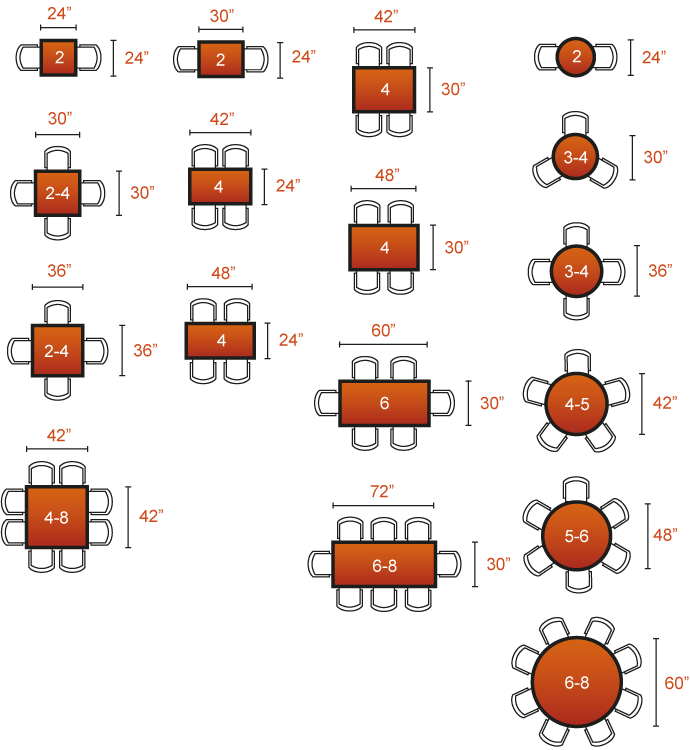|
TABLE & SEATING GUIDE One extremely important decision about opening and owning a restaurant or venue is determining a seating structure and seating capacity. No matter how your venue may be set up, determining the capacity is crucial for day-to-day operations, kitchen management, and staffing. Whether you have a large-scale or small-scale venue, the seating capacity could be the single greatest influence on your business as a whole. Use our guidelines below for assistance with planning your layout. “Rule of thumb” for most restaurants: IMMEDIATE GUEST SPACE
TABLE SPACING
Allow 42” between edges of square tables. This allows 6“ for chairs to pull out.
Allow 60” between edges of square tables with service aisles. This allows 26” for service aisle.
 Allow 24” between corners of diagonal tables without service aisle.
Allow 30” between corners of diagonal tables with narrow service aisle.
 RECOMMENDED SEATING CAPACITY
SQUARE RECTANGLE ROUND
 |







